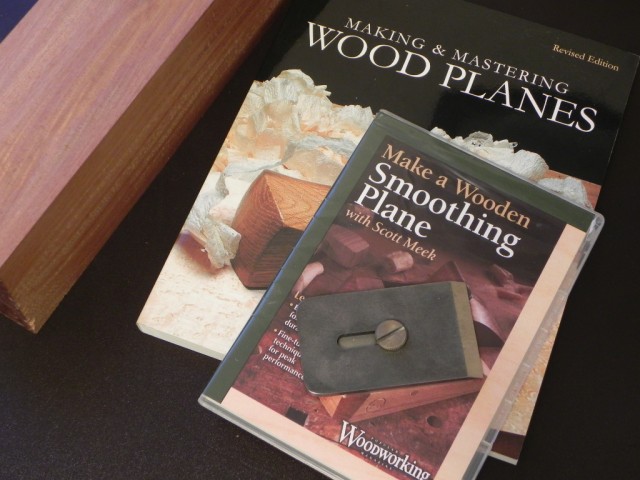Scott Meek’s Video Review
Here in central IL we’ve had the coldest winter in over a decade. Thus, in the last month I’ve spent about 5 hours total in my shop. Since I’m the type of person that goes stir crazy if I’m not doing something that’s challenging me mentally or physically, I’ve been doing a loot of reading, and planing for future projects. One of the things I’ve been wanting to do for a while is make a wooden hand plane. Iv’e read David Finck’s Making & Mastering Wood Planes, and I’ve purchased a 2″ Hock Iron in perpetration for making a plane some time this year.
To give me my woodworking fix for the week, I decided to buy Scott Meek’s Make a Wooden Smoothing Plane. The video had a lot of good info about how Scott makes his planes. Parts of the video progressed a little slow for my taste, but I expected as much when I saw the video was 149 minutes long. To be fair, this is Scott’s first video that I’m aware of, so he definitely deserves a by when you compare him the likes of garret hack and Philip C. Lowe, who’ve been teaching and making videos for years. The one thing I wish Scott had focused more on, was the harness and movement of various wood. while I have never made a plane before, I know a decent amount about wood, and it seems to me people use the wrong woods when making planes. Overall I thought the video was very well done, and well worth the $25 I payed for it.



“…it seems to me people use the wrong woods when making planes.”
Care to elaborate?
what I see, is a lot of people using White Oak, and Hard Maple and a few other native species. In my opinion you want to make a plane out of the hardest and stablest wood you can find. You want a hard wood so that the sole wears slowly, and you want stable so that thew plane stays as flat as possible.
While White Oak, and Hard Maple are hard for native woods, and decently stable, they pale in comparison to other species. I think the main reason people use these woods, is because they are cheap compared to some of the better suited species.
The following list is of wood species I would use in descending order of preference. All the woods are known for being very stable, but as you go down the list they get softer. For the softer woods, I’d probably add a sole made from one of the really hard woods.
1. Ipe
2. Bloodwood
3. Mesquite
4. Honduran Rosewood
5. Bocote
6. Osage Orange
7. Bubinga
8. Purpleheart
9. Padauk
10. African Blackwood
11. Cocobolo
12. black walnut
13. Cherry
14. African Mahogany
15. Genuine Mahogany, Honduran Mahogany
Teak is more stable than genuine mahogany.